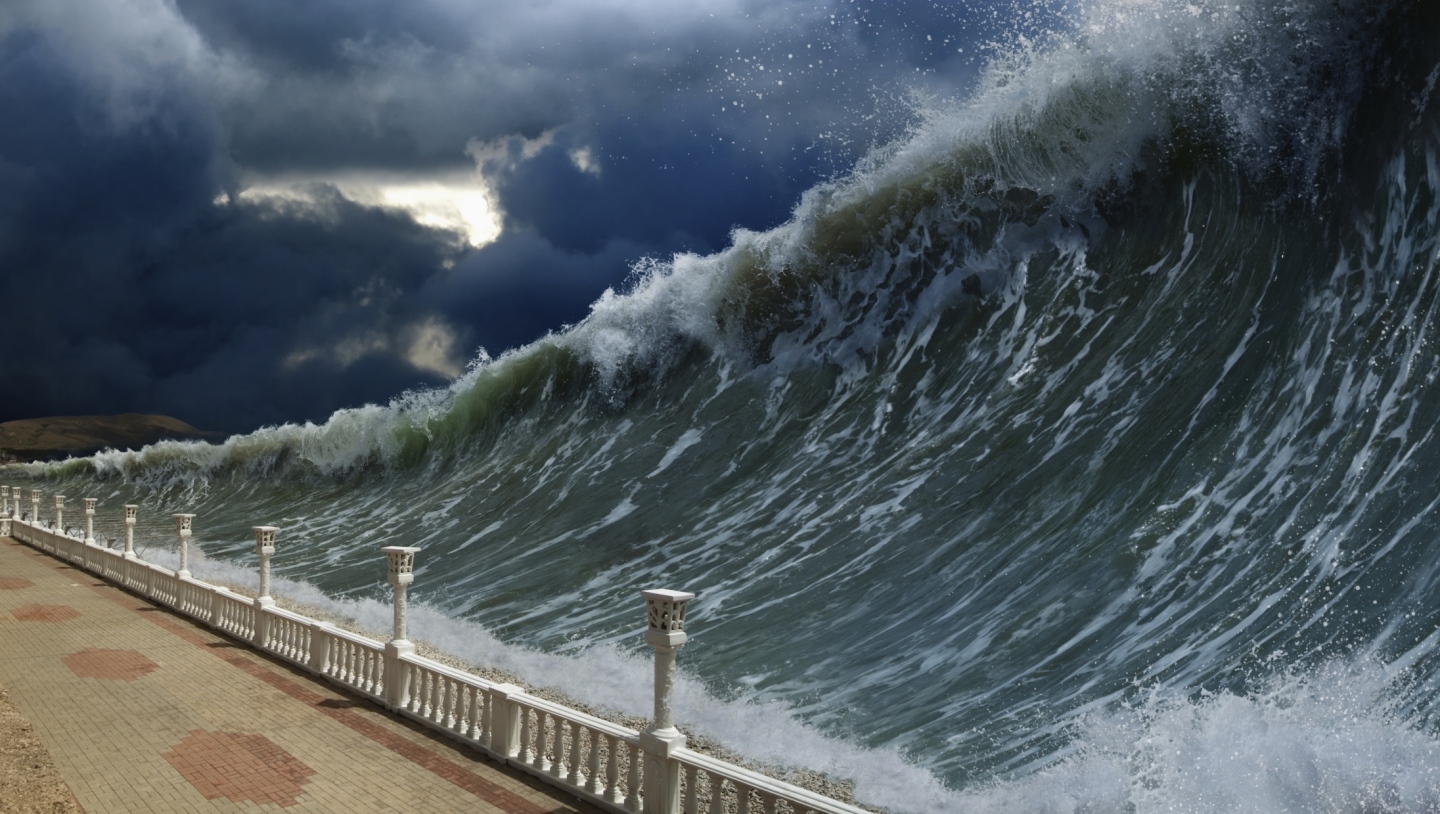11 Facts About Tsunamis

Welcome to DoSomething.org, a global movement of millions of young people making positive change, online and off! The 11 facts you want are below, and the sources for the facts are at the very bottom of the page. After you learn something, Do Something! Find out how to take action here.
- A tsunami is a series of ocean waves caused by an underwater earthquake, landslide, or volcanic eruption. More rarely, a tsunami can be generated by a giant meteor impact with the ocean. These waves can reach heights of over 100 ft.^[National Geographic Society. "Tsunamis." National Geographic. Accessed March 1, 2014. http://environment.nationalgeographic.com/environment/natural-disasters/tsunami-profile/.]
- About 80% of tsunamis happen within the Pacific Ocean’s “Ring of Fire.”^[National Geographic Society. "Tsunamis." National Geographic. Accessed March 1, 2014. http://environment.nationalgeographic.com/environment/natural-disasters/tsunami-profile/.]
- The first wave of a tsunami is usually not the strongest, successive waves get bigger and stronger.^[US Dept of Commerce. "Pacific Tsunami Warning Center FAQ." NOAA's National Weather Service. Accessed March 3, 2014. http://ptwc.weather.gov/faq.php.]
- Tsunamis can travel at speeds of about 500 miles or 805 kilometers an hour, almost as fast as a jet plane.^[US Dept of Commerce. "Pacific Tsunami Warning Center FAQ." NOAA's National Weather Service. Accessed March 3, 2014. http://ptwc.weather.gov/faq.php.]
- The states in the U.S. at greatest risk for tsunamis are Hawaii, Alaska, Washington, Oregon, and California.^[U.S. Department of the Interior. "Tsunami Hazards—A National Threat." U.S. Geological Survey. Accessed March 3, 2014. http://water.usgs.gov/edu/tsunamishazards.html.]
- If caught by a tsunami wave, it is better not to swim, but rather to grab a floating object and allow the current to carry you.^[National Oceanic and Atmospheric Administration. "What You Should Do." National Weather Service. Accessed March 3, 2014. http://www.nws.noaa.gov/om/brochures/tsunami6.htm.]
- Tsunamis retain their energy, meaning they can travel across entire oceans with limited energy loss.^[Commonwealth of Australia. "Tsunami Facts and Information." Bureau of Meteorology. Accessed March 3, 2014. http://www.bom.gov.au/tsunami/info/.]
- Tsunami means “harbor wave” in Japanese (tsu = harbor + nami = wave), reflecting Japan’s tsunami-prone history.^[National Oceanic and Atmospheric Administration. "Tsunami Terminology" National Weather Service. Accessed March 3, 2014. http://www.nws.noaa.gov/om/brochures/tsunami6.htm.]
- Scientists can accurately estimate the time when a tsunami will arrive almost anywhere around the world based on calculations using the depth of the water, distances from one place to another, and the time that the earthquake or other event occurred.^[US Dept of Commerce. "Pacific Tsunami Warning Center FAQ." NOAA's National Weather Service.Accessed March 3, 2014. http://ptwc.weather.gov/faq.php.]
- Hawaii is always at great risk for a tsunami – they get about 1 per year and a severe one every 7 years. The biggest tsunami that occurred Hawaii happened in 1946, the coast of Hilo Island was hit with 30 ft waves at 500 mph.^[U.S. Department of Homeland Security. "Tsunamis." Federal Emergency Management Agency. Accessed March 3, 2014. http://www.fema.gov/media-library-data/26ea1ceee22e73558b01030a4a0d7c47/FEMA_FS_tsunami_508-8-15-13.pdf.]
- In 2004, the Indian Ocean tsunami was caused by an earthquake with the energy of 23,000 atomic bombs. After the earthquake, killer waves radiating from the epicenter slammed into the coastline of 11 countries. The final death toll was 283,000.^[National Geographic Society. "The Deadliest Tsunami in History?." National Geographic. Accessed March 1, 2014. http://news.nationalgeographic.com/news/2004/12/1227_041226_tsunami.html.]
GET INVOLVED
Make a difference in your community and add your vision to the future of our democracy
